Radar
Radar (an acronym for RAdio Detection And Ranging) provides you with a different viewpoint from that seen by your eyes. In poor visibility conditions, it reveals what would otherwise be invisible or barely discernible, from prominent features like landmasses and ships to smaller ones such as buoys, small craft, and even sea birds in calm conditions.
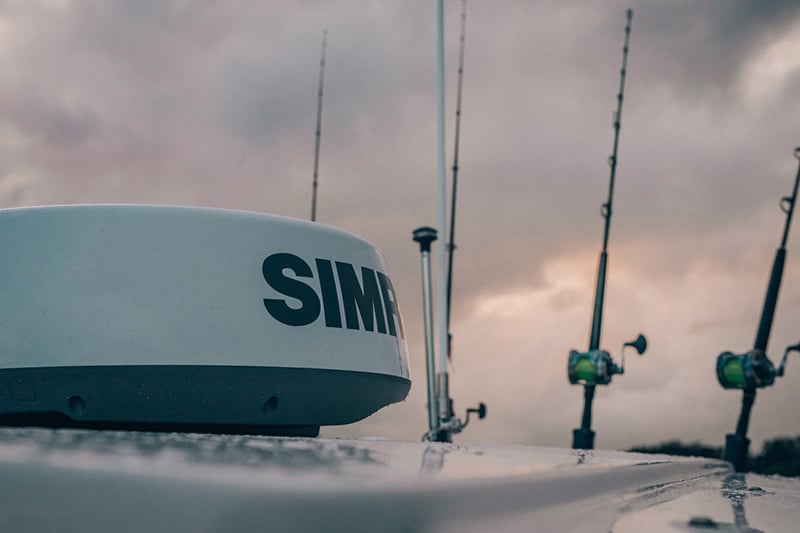
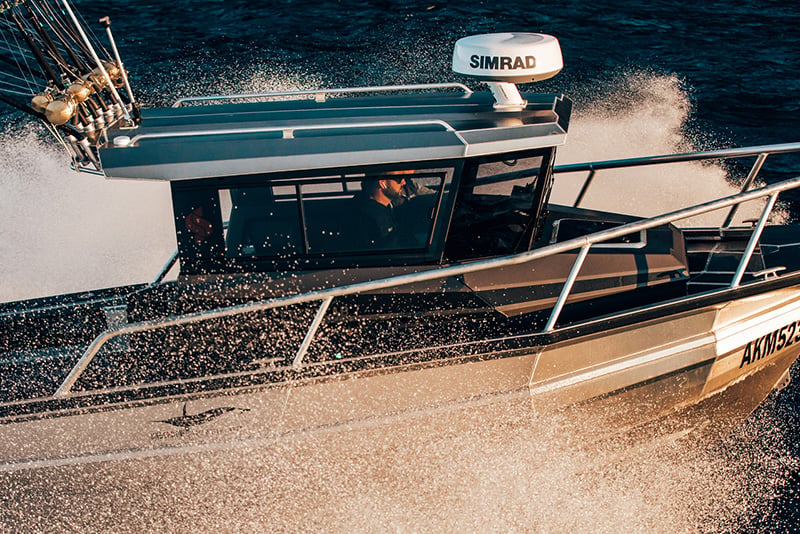
It is equally helpful on a clear day in broad daylight, providing you with the tools to accurately gauge your distance and bearing from a navigation mark or headland. Due to the lack of visual references, it can be hard to accurately judge distance by eye at sea.
Radar's ability to monitor relative position over time is invaluable in collision avoidance – avoiding close contact with ships and other hazards.
Radar first came into operation nearly nine decades ago. In recent times the technology has exponentially increased in capability to the extent it has never been easier to use or install on even small craft like RIBs and open deck day boats.
What is radar?
As it traditionally evolved, radar sends out electromagnetic pulses from a rotating magnetron at the speed of light. Objects are detected by measuring the direction and time these pulses bounce back if they hit a reflective target.
Today's generation of Simrad® radars offers a significant improvement in performance by using pulse compression and CHIRP (Compressed High-Intensity Radiated Pulse) technologies. They provide exceptional performance with enhanced definition and also dramatically reduce radio emissions. These advances are made possible by the use of modern micro-electronics. The kind of radar image achievable now on small boat radar would have been unimaginable on the largest ship not so many years ago.
Radar enables you to:
- 'See' what might otherwise remain invisible at night and in poor conditions such as mist and fog
- Monitor your distance and bearing from ships, boats, buoys and land masses
- Cover blind spots at the wheel
- Provide a useful cross-check with your other navigation data
As we'll discover further on in this article, the latest generation Simrad® radar and Multi-Function Displays (MFDs) add much greater definition and user-friendly tools to enable you to operate radar proficiently, with ease.
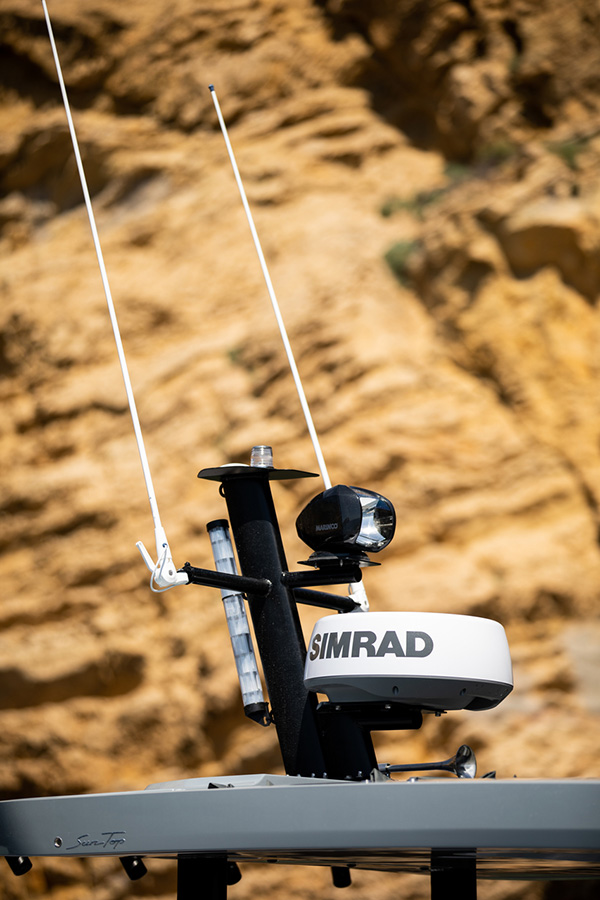
Range
The range of a radar is very much like a marine VHF. Its transmissions must be 'line of sight' where the radar antenna and target must be 'visible' to each other.
The earth's curvature is a factor, so the height of the radar antenna (or radome) is essential. For example, if your boat's antenna is at the height of 5m and the object you are detecting is also at the height of 5m, then the theoretical maximum range is 18km (just under 10 nautical miles). If you were seeking a 10m high target, the distance would increase to 22km (12nm).
There are quite a few reasons why the anticipated range is not achieved. The shape and material of the objects you are trying to detect may not reflect well. Sea conditions will play a part as water is a good reflector. A heavy rainstorm may reflect the radar pulses and disguise a target in the middle of the downpour. That can be useful of course, in terms of detecting squalls.
The reflective nature of water helps in other ways. Small objects such as plastic buoys that might otherwise not reflect may do so at short ranges in calm seas because they are wet or cause disturbance in the water around them.
We have beneficial advice on the optimal installation of radar antennas and radomes in our Getting the best from your radar article.
Common functions
Typical controls you will find on all radars include:
- Range – sets the detection distance at which your radar will display targets. Think of this as zooming in to see more detail closer to the boat or out to detect more extended range targets.
- Gain – increases or decreases the amount of signal sent and detected. Turn up to help see smaller targets or turn down to reduce the amount of 'clutter' – false reflections that make the screen too busy to read correctly.
- Rain control – enables you to control the amount of reflected signal you get from cloud bursts. This control is usually off.
- Sea clutter – provides a means of reducing the number of reflected signals from waves – typically adjusted to suit the conditions.
- EBL – an Electronic Bearing Line is a rotating radial line on the radar, controlled by the operator, enabling you to measure the relative bearing to a target. EBL is invaluable for manual collision avoidance
- VRM – a Variable Range Marker is an expanding circular ring, controlled by an operator, that enables you to measure the range to a target
- Guard zones – these are sectors on the radar screen that you set up using EBL and VRM controls on which you can set alarms to warn if a target enters the sector.
Modern radars in the Simrad® range have modes and more advanced features that you can engage to assist with automatic control of these functions.
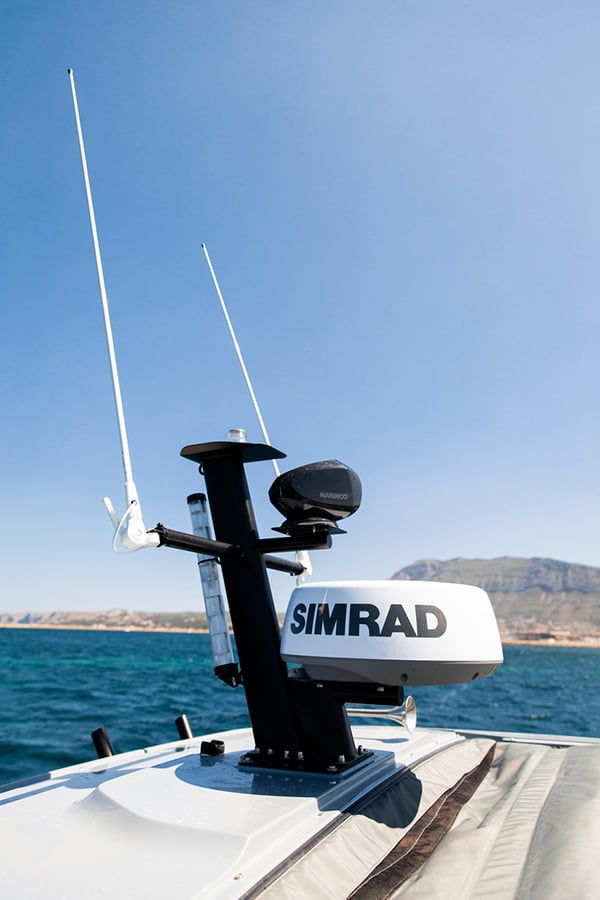
Advanced functions and features
Modern developments have provided the user with much more sophisticated control. We've chosen a small selection here.
One excellent example of the abilities of modern radar is the dual-range function that you'll find on Simrad® Halo radars. Dual-range allows users to monitor short and long-range images side-by-side, something previously requiring two radar sets to achieve. It can be hard to keep perspective if constantly zooming up and down ranges – dual-range solves that by allowing you to simultaneously monitor short and long ranges.
Even the smallest radars now typically have advanced collision avoidance functions once only seen on big ship bridges.
The term MARPA means Mini Automatic Radar Plotting Aid. The 'mini' part relates to MARPA being a simplified version of ‘ARPA’ used on big ship radar. MARPA enables you to automatically track several targets to monitor their progress and ascertain whether they might become dangerously close if you maintain your current course and speed.
The latest Simrad® radars build on MARPA by having advanced features such as VelocityTrack™, which uses Doppler technology to provide instant visual feedback through coloured trails. The radar calculates if the targets are approaching or moving away from your vessel and colour them yellow approaching and green diverging (depending on the chosen palette) to provide instant visual feedback on which targets pose a collision threat.
ZoneTrack™ provides more valuable collision avoidance information such as Closest Point of Approach (CPA) and Time to Closest Point of Approach (TCPA) and vessel speed and heading as soon as the target enters a predefined zone. Combined with VelocityTrack and AIS, you have the ultimate in situational awareness and collision avoidance at a glance.
'Dangerous Target Alert' warns the operator of dangerous radar and AIS targets according to parameters that the operator sets.
ZoneTrack™ and Dangerous Target Alert are currently only available on Halo Domes. You can read more about the advanced features on Simrad® radars in our Radar – your extra pair of eyes feature.
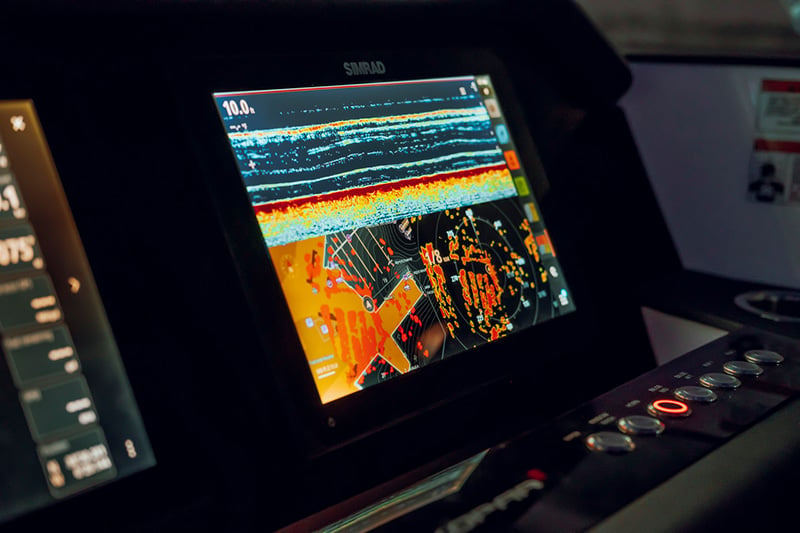
Why MARPA and not AIS?
AIS (Automatic Identification System) information provided by your marine VHF of course, also provides a picture of other vessels around you, provided they are broadcasting AIS data. Still, it relies on the information they are sending. Radar will also show all non-AIS-equipped targets around you that it detects, and MARPA will provide its estimate of course and speed.
The ideal setup is to have MARPA and AIS available to build the very best picture of everything around you.
What's in the box
A modern radar installation is straightforward, comprising:
- A radome that contains the rotating antenna inside a fixed protective housing or an open array (where you can see the antenna rotating). Radomes are typically used on smaller craft and for situations where the radar needs maximum protection. Open arrays typically offer an improved definition and increased range.
- A dedicated radar display unit or multi-function display.
- A cable to connect the radome or open array with the marine electronics such as an MFD.
You'll also need:
- A heading sensor – the quality of this is vital to the collision avoidance and navigation information that the radar provides. See our article The Importance of Heading for useful guidance.
- A mounting bracket or mast if your boat does not already have a suitable location to place the radome or open array.
Depending on your set-up the radar will also benefit from access to the other navigation data on your marine electronics system, which in the very latest systems is achieved by plugging it into your boat's NMEA2000® network.
An autopilot is also very useful when using radar. Its ability to hold a steady course makes collision avoidance much easier and more predictable.
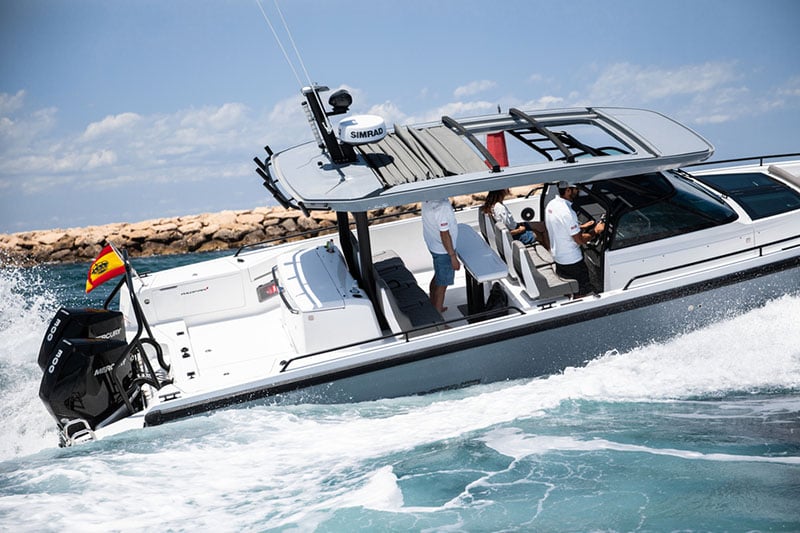
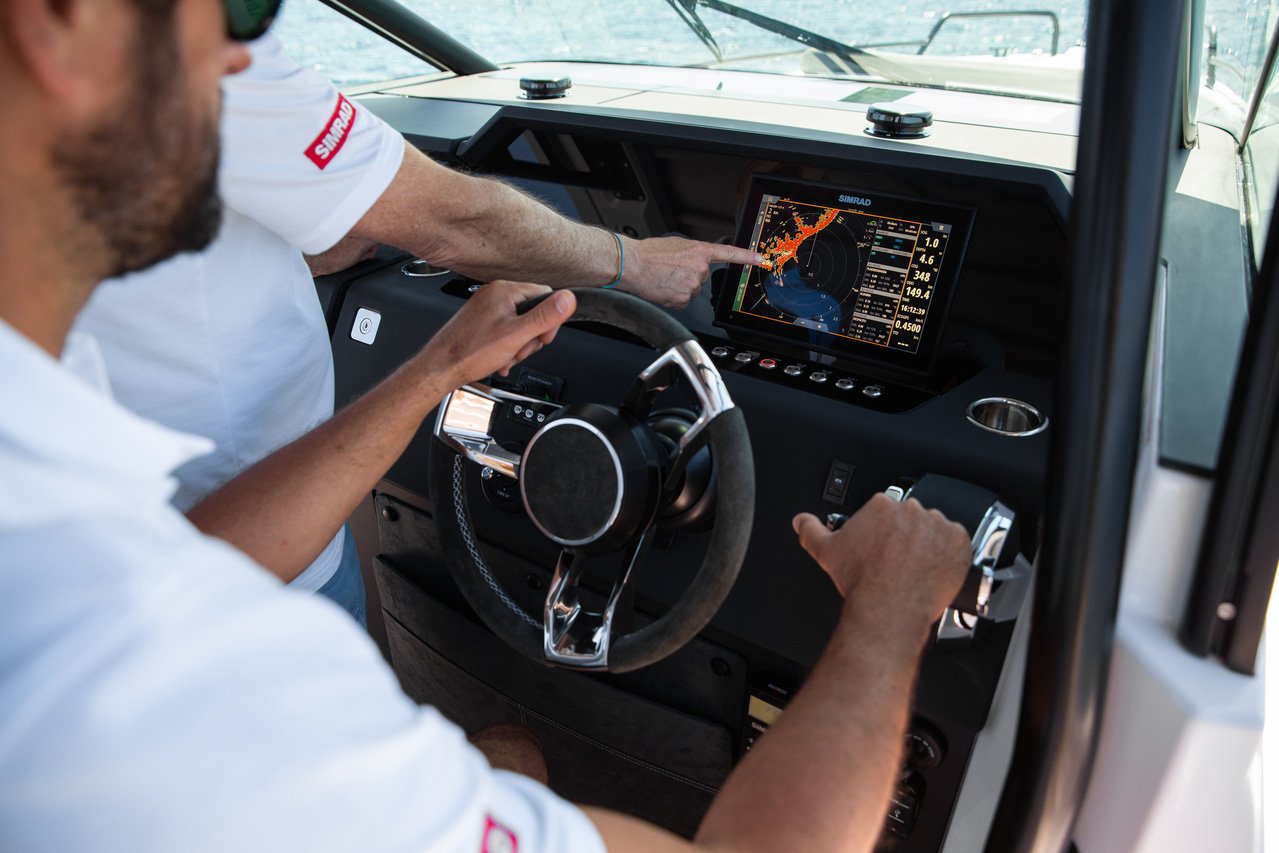
Regulations
Radars are tightly regulated in their design and manufacture to ensure that transmissions are not harmful to health if the equipment is used correctly. Do however read instructions carefully, so you are familiar with any precautions.
Depending on your country you may need to include your radar in your ship's radio licence.
What would I use my radar for and when?
- Collision avoidance
- Navigating safely in conditions of poor visibility and at night
- Cross-referencing other navigation information
- Covering blind spots from the driving position
- Watching out for extreme weather events like squalls
- Detecting fish activity (by spotting clusters of sea birds)
If you have a radar fitted, we recommend you use it all the time. See our feature on why constant use of Should I always keep my radar switched on? to understand more about making radar a part of your regular navigation.
















